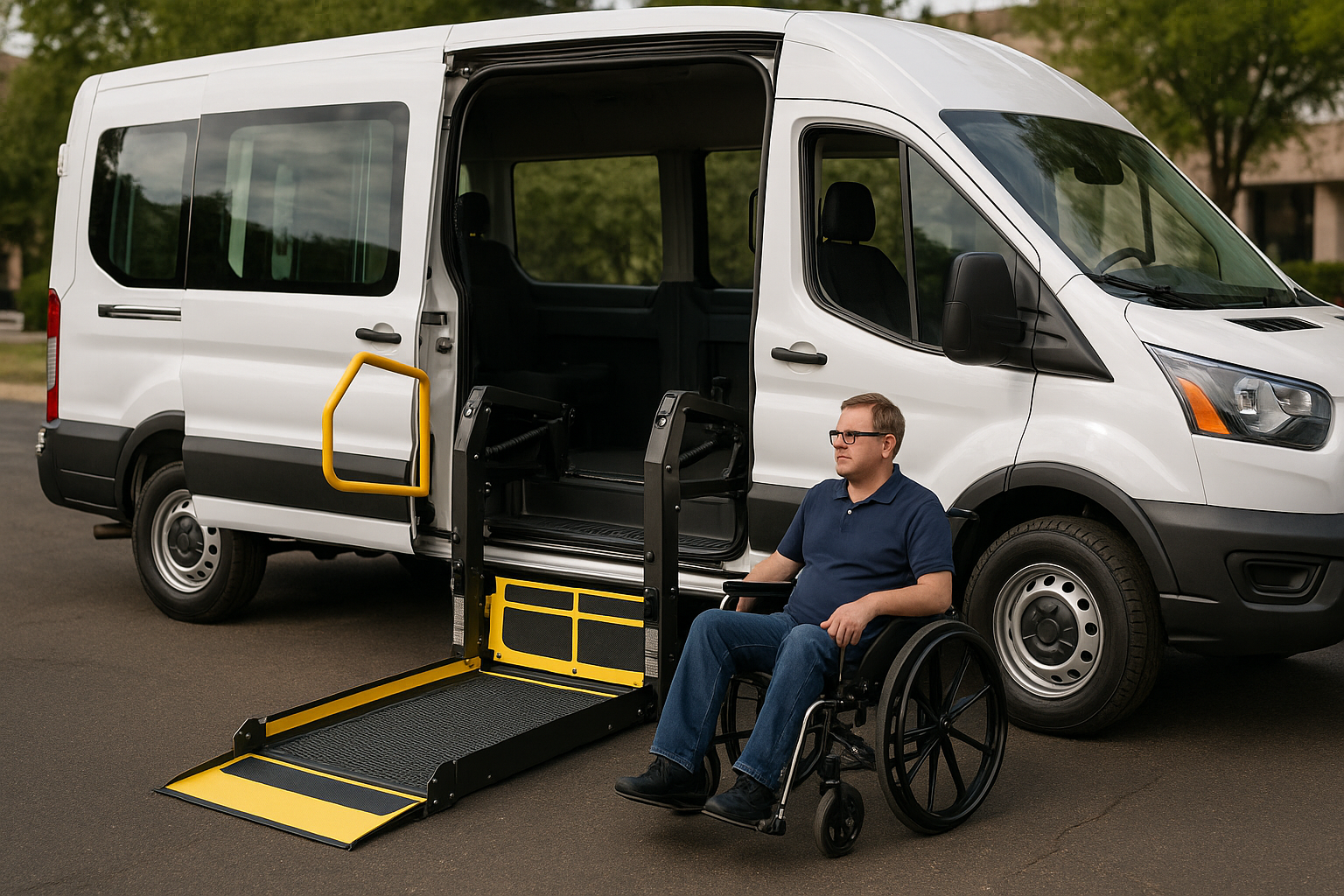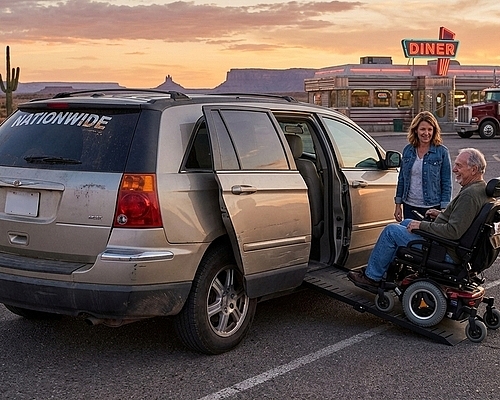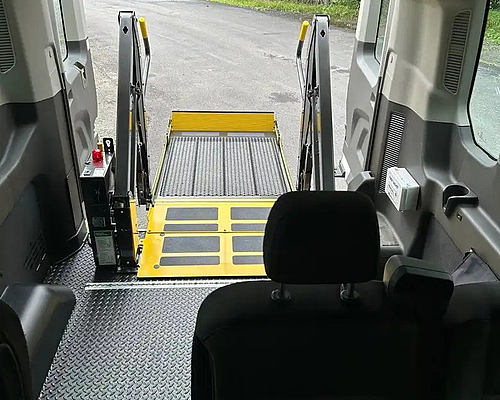By using our website, you agree to the use of cookies as described in our Cookie Policy
What Makes a Van ADA Compliant for Transport Services
Most vans with a ramp still leave people stuck outside. Wide doors, strong lifts, and secure tie-downs are non-negotiable. Every inch of the vehicle matters. Miss a detail, and someone gets left out or put in danger.

Transport providers in this city face strict rules. Federal guidelines don’t bend. Passengers expect more than a ride. They want comfort, safety, and dignity. ADA compliance isn’t a checkbox. It’s the difference between a van that works for everyone and one that leaves people stranded.
What Every ADA Van Needs
Every compliant van shares a set of features. These aren’t optional. They’re the baseline for real accessibility. Here’s what you’ll find in a properly equipped Ford Transit mobility van or similar vehicle:
- Wheelchair lift or ramp that handles at least 800 pounds. Anything less, and you’re gambling with safety.
- Clear floor space, at least 56 inches by 96 inches. Tight quarters make transfers impossible and create hazards.
- Door openings no smaller than 56 inches high and 30 inches wide. Narrow doors block access. Low ceilings cause injuries.
- Four-point wheelchair securement systems. Two straps don’t cut it. Chairs shift, passengers get hurt.
- Bright, reliable lighting at every entry. Dim corners hide obstacles. Missed steps lead to falls.
- Non-slip flooring. Wet shoes and smooth vinyl turn a van into a skating rink.
- Grab handles and rails where people actually need them. Poor placement means no support when it counts.
These features aren’t just for show. They keep people safe. They make every ride possible for every passenger. Medical transport requirements go even further, with strict measurements for doorways, floor space, and equipment placement. Miss a spec, and the van fails inspection. That means downtime and lost business.
Comfort and Safety in Daily Use
ADA compliance isn’t just about passing an inspection. It’s about real-world use. Every day, drivers and passengers put these vans to the test. A ramp that sticks wastes time and frustrates everyone. A lift that groans under weight won’t last. Securement straps that tangle or break leave passengers feeling unsafe. Lighting that flickers or fails turns a simple ride into a struggle.
Non-slip floors matter most on rainy days. Grab handles need to be solid, not loose or wobbly. Every detail counts. Adult daycare transport solutions focus on these details. Vans built for daily use hold up under pressure. They don’t just meet ADA standards. They make every ride smoother and safer for everyone on board. When we design accessible vans, our team pays close attention to these comfort and safety features so that every trip is as smooth as possible.
Certification and Inspections That Matter
ADA compliance doesn’t end when the van leaves the lot. Certification is ongoing. Inspections happen regularly. Every accessible vehicle specification must be documented. Inspectors check every modification, every safety feature. Miss a record, and the van can’t operate. Work with certified vehicle modifiers to keep everything above board. They understand what inspectors look for. They keep your fleet running and your business protected.
Documentation isn’t paperwork for its own sake. It proves every van is ready for service. It shows every change, every upgrade, every repair. When something goes wrong, clear records speed up fixes and keep passengers safe. At TCI Mobility, we help clients maintain thorough documentation and certification for their accessible vehicles, so compliance never becomes a roadblock to service.
Why Details Make or Break Compliance
Small oversights cause big problems. A ramp that’s an inch too short blocks access for some chairs. A missing grab rail leaves passengers unsteady. Lighting that doesn’t reach every corner creates blind spots. Securement systems that don’t fit every chair force drivers to improvise, and that’s when accidents happen.
Real ADA vans don’t cut corners. They’re built for the people who use them every day. That means checking every measurement, testing every feature, and fixing problems before they become hazards. It’s not about passing a test. It’s about making sure every passenger gets where they need to go. Safely, comfortably, and with dignity. Our focus at TCI Mobility is to deliver vehicles that meet these standards, so your fleet is always ready for the demands of daily service.
What to Look for When Upgrading Your Fleet
- Test every ramp and lift with real weight, not just empty chairs.
- Measure doorways and floor space yourself. Don’t trust the brochure.
- Check securement systems for wear and tear. Replace straps before they fail.
- Walk through the van with a wheelchair user. See what works and what doesn’t.
- Review inspection records and certification documents. Gaps mean trouble.
- Ask about medical transport requirements if you serve clinics or hospitals.
- Look for certified vehicle modifiers who stand behind their work.
Upgrading isn’t just about new equipment. It’s about making sure every van in your fleet is ready for real-world service. That’s how you protect your business and your passengers. We’re here to guide you through every step, from selecting the right features to ensuring ongoing compliance for your accessible vehicles.
Get Your ADA Compliant Van
Ready to upgrade your transport fleet? TCI Mobility specializes in delivering fully compliant accessible vans that exceed expectations. Call us at 877-824-8267 or request information to discuss your ADA compliant vehicle needs.
‹ Back








